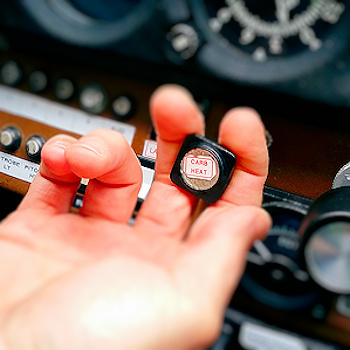Subscriber question:
"I recently experienced what felt like carb ice on an 80-degree day. Is this possible? Is there a specific temperature range when carb ice is most common, or can it occur any time?" - Bruce R.
Bob:
 “All aircraft utilizing a carbureted engine are subject to ice buildup in the throat of the carburetor. This ice buildup is due to fuel vaporization and the pressure decrease in the carburetor venturi. These two factors contribute to a temperature decrease in the carburetor throat.
“All aircraft utilizing a carbureted engine are subject to ice buildup in the throat of the carburetor. This ice buildup is due to fuel vaporization and the pressure decrease in the carburetor venturi. These two factors contribute to a temperature decrease in the carburetor throat.
It is possible for the temperature drop in the carburetor to be as much as 70 degrees Fahrenheit, meaning that ice could form on a day where the ambient temperature could be as much as 100 degrees Fahrenheit. However, carburetor ice is most likely to form when temperatures are below 70 degrees Fahrenheit and the relative humidity is more than 80%.
When ice builds up in the carburetor throat, the engine may cease operation so it is essential that we always check carburetor heat to determine that it operates properly.
A good time to check carburetor heat is during the run-up, after the mag check. On a fixed pitch propeller airplane, you should see a slight reduction in RPM. For an airplane equipped with a constant speed propeller, you should see a slight reduction in manifold pressure. Reduce the throttle to idle with the carb heat on and the engine should run at idle properly. Turn the carburetor heat off and the idle/manifold pressure should return to normal.
When using carb heat in flight, follow the manufacturer’s recommendations.”
During your worst carb ice encounter, how quickly did carb heat fix the problem?
